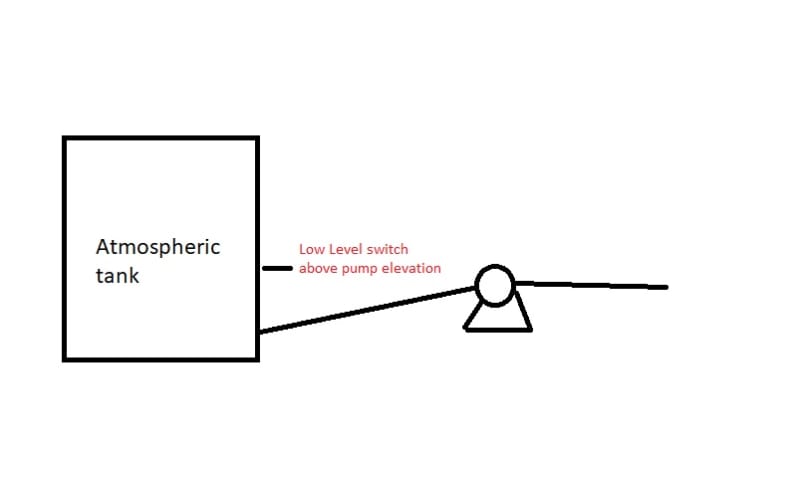Hello,
Most engineering guides (e.g. Shell DEP) advise that pump suction piping shall be horizontal or sloped downward to the pump.
I understand this might be a good practice but I can't see it is written as a requirement.
I'll go straight to my case.
We'd like to increase the emptying rate of a storage tank and it would be of great interest to use a specific pump. However, that pump is installed 1 meter higher than the tank nozzle so the suction pipe will have to be sloped upwards to the pump instead of downwards.
I am having trouble identifying what risks may arise from this design:
[ul]
[li]Suction pipe will be sloped upward from the tank to the pump.[/li]
[li]Suction pipe will have no pockets.[/li]
[li] Low-level switch will be set at or above pump elevation to avoid reverse flow from the pump suction into the tank when the pump stops.[/li]
[li] No NPSH problems.[/li]
[/ul]
What are the possible problems I might have with such design(sketch attached)?

Thank you everyone!
Most engineering guides (e.g. Shell DEP) advise that pump suction piping shall be horizontal or sloped downward to the pump.
I understand this might be a good practice but I can't see it is written as a requirement.
I'll go straight to my case.
We'd like to increase the emptying rate of a storage tank and it would be of great interest to use a specific pump. However, that pump is installed 1 meter higher than the tank nozzle so the suction pipe will have to be sloped upwards to the pump instead of downwards.
I am having trouble identifying what risks may arise from this design:
[ul]
[li]Suction pipe will be sloped upward from the tank to the pump.[/li]
[li]Suction pipe will have no pockets.[/li]
[li] Low-level switch will be set at or above pump elevation to avoid reverse flow from the pump suction into the tank when the pump stops.[/li]
[li] No NPSH problems.[/li]
[/ul]
What are the possible problems I might have with such design(sketch attached)?

Thank you everyone!
